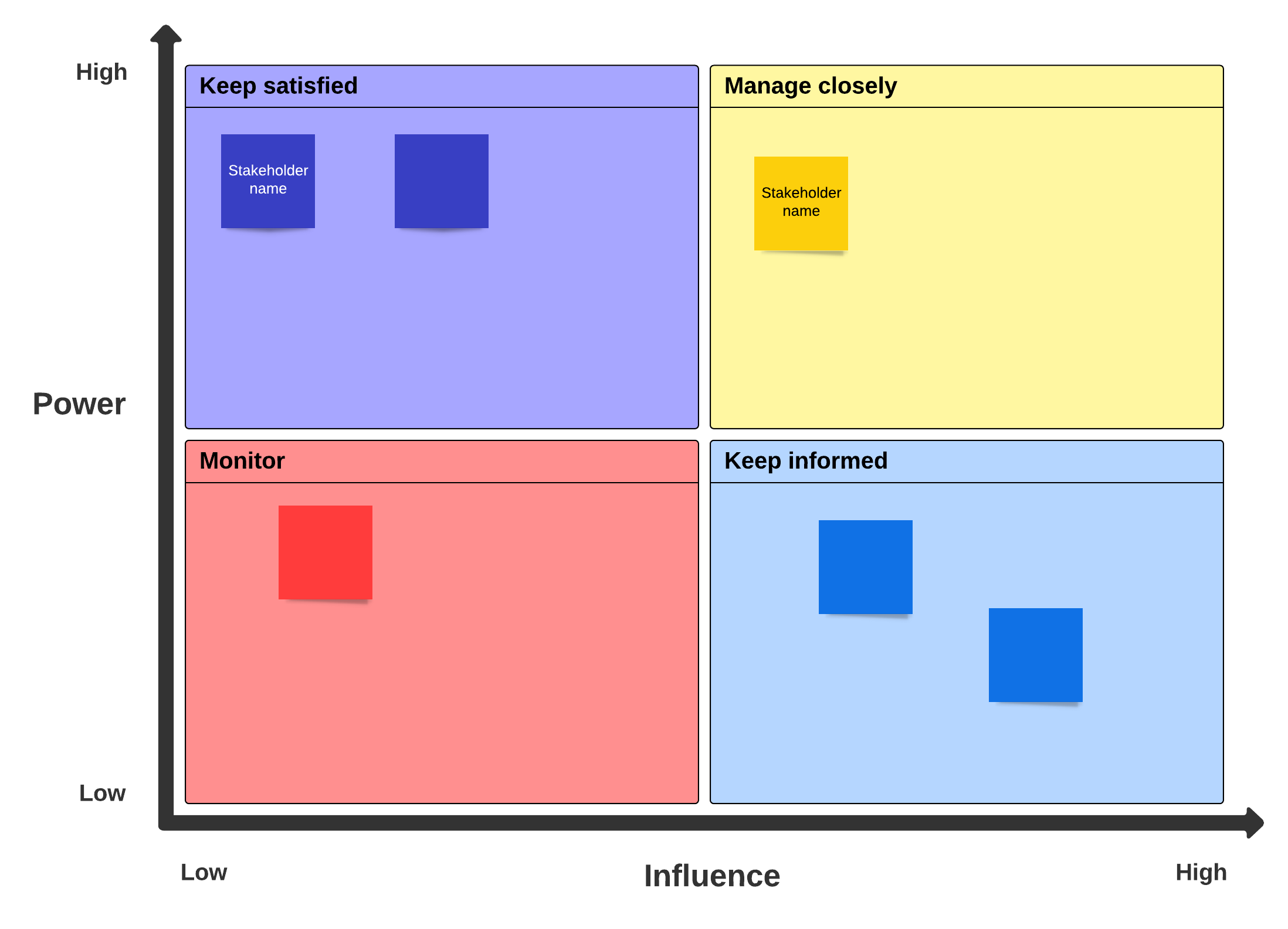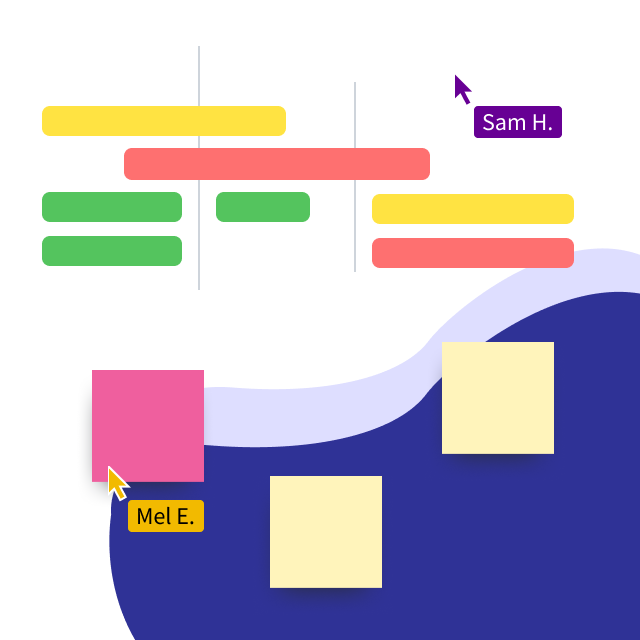
How to create a project communication plan
Reading time: about 7 min
Topics:
Poor communication is the root of many issues, both personal and professional. Breakdowns in communication can lead to unreasonable expectations, misunderstanding, confusion, and discord.
When it comes to managing projects, The Project Management Institute (PMI) found that poor communication leads to project failure one-third of the time. Even if the project doesn't fail, siloes, groupthink, unrealistic or unspoken expectations, and a lack of context can get in the way of progress.
That's a lot of time, money, and resources on the table. A good communication plan helps avoid these pitfalls and helps you answer critical questions, and set clear expectations throughout any project:
- Who's in charge of what?
- What's the budget?
- What are the timelines?
- How will this help us achieve our strategic goals?
Whether it's a quick, simple task or a long-term strategic project with lots of moving parts, dependencies, and stakeholders, a project communication plan keeps everything on track, builds trust, and eases the minds relying on the project's success.
What is a project communication plan?
A project management communication plan is a communication roadmap between clients, teams, or other stakeholders that covers the entirety of a project. It's a simple breakdown: who are the stakeholders, what do they need to know, and how and how often should the communication happen?
A project communication plan eliminates ambiguity and reduces the anxiety of knowing how to pull off a project and where it stands in the process.

Why is a project communication plan important in project management?
Creating the right communication strategy can help avoid major communication breakdowns before they happen. A good project communication plan also:
Provides a shared, central source of reference: A documented project communication plan gives everyone involved in the project a shared document to reference and ensures everyone stays on the same page.
Sets clear expectations: A project communication plan establishes clear expectations for how updates will be communicated to the project team and stakeholders.
Increases visibility: Going dark on communication throughout a project can breed mistrust and confusion even if things are going smoothly. A project communication plan ensures that best practices for communication are upheld at every stage of the process
Provides opportunities for feedback: Laying out the who, what, when, and how makes it easier for stakeholders to identify gaps in the review process and correct mistakes before the project even begins
Boosts productivity in team meetings: With a mapped out communication plan, you can spend less time deciding what the next steps are and more time on achieving quality results.
What goes into a good communication plan in project management?
When it comes to communication plans, it helps to think about Who, What, When, and How. Your plan should identify who needs to be communicated with, what assets to share, when to share them, and how to share them.
With that information, anyone on the team can look at a communication plan and know which of their assets will be seen by which stakeholders, ensuring that things are at the right development stage before they are shared with decision-makers.
Communication types and styles
People–even executives–process information in different ways. Some people like an oral presentation of what they are reviewing, while others prefer a written report. Another popular format is to use visuals to help everyone connect the dots and understand the context for what they are reviewing. These variables can mean the difference between getting a project approved or having it rejected because a stakeholder doesn't entirely understand what's in front of them.
That's why it's important to note communication types and styles in your communication plan. Having the right approach can increase your chances of stakeholder approval and it can keep your team from spinning their wheels at certain stages of the project. Identify whether the reviewer prefers to communicate via email, PowerPoint, video conference call, or collaboration app.
Meeting schedules
One of the main points of a review process is to ensure the right people are looped in at the right time. If you have a project meeting with 50 people every week, you aren't likely to get much done. Having a few smaller meetings every two weeks might lead to better results.
When creating your communication plan, think about how often you need to update each stakeholder and how often progress is made on the assets they'll be reviewing. If, for example, it takes two weeks to iterate on an app feature, you will not want to set up weekly meetings with a stakeholder–they would only receive fresh updates half the time. Set up a bi-weekly meeting instead so that each meeting is primed to move the project forward.
Communication goals
While most meetings are about getting input or approval, that's not always the case. Occasionally you may be communicating with stakeholders for awareness or as an FYI on other projects that might tangentially impact them. Each meeting purpose requires a different approach, so you'll want to note in your communication plan what kind of input, if any, you hope to receive from them.
Information you need to share
You're way ahead of the game once you've identified the Who, When, and How of your communication plan. The final element to flesh out is which assets you will share with your stakeholders. Different stakeholders have different interests in a project–some may need to know the timelines while others may need a status update on a particular part of the project.
Identifying these interests ahead of time will save your team time and effort. It will also help you get the most out of stakeholders because it will pinpoint what they need to know and what they may need to share.
How to write a project communication plan
Now that you know the key components of a communication plan, it's time to start actually writing things out.
A grid or matrix template is usually best for your communication plan to cross-reference stakeholders with the relevant details. And remember: Communication plans help people collaborate, so don't feel like this has to be done alone. Talk to your team leaders to determine some of the information described below to get the most comprehensive communication plan possible.
Determine project communication needs
What needs to be shared? This is a key question to answer when creating your communication plan.
For most projects, you will have the standard needs: timelines, status updates, dependencies, etc. But each project may also have unique needs like live demonstrations, surveys, and more. Talk through the different aspects of the project with team leaders and match those with stakeholders to determine what might need to be shared.
Define your purpose
Communication plans can take many different shapes and forms and it helps narrow the scope of your communication plan by defining its purpose. Your purpose can be as simple as "keeping stakeholders up to date regularly" or "improving the efficiency of our team through better communication."
A defined purpose can also help maintain energy during the project. Throughout the process, there will likely be ebbs and flows–and even moments where communication seems futile. Going back to your communication objective can help ground your team in why communication is essential to a successful project.
Consider communication methods
Map out the communication methods you have at your disposal and the communication methods you know stakeholders prefer. This will help you keep your options open as the project evolves and stakeholder needs evolve. Possible communication methods include:
- Weekly meetings
- Email meeting notes
- Status reports
- Spreadsheet tracker
- Presentations
- Collaboration apps such as Slack or Microsoft Teams
- Demos
- To-Do Lists
Set frequency for communication
Each stakeholder will likely have a different cadence for communication, so use your communication plan to note the best cadence for each one. Laying out the frequencies may also help you identify those who could be updated simultaneously, leading to more efficiencies in the communication process.
Ready to get started? A stakeholder map template can help you identify project stakeholders and how each impacts the project’s success.

Organize ideas, collaborate with your team, and achieve your goals.
Sign up for freeAbout Lucidspark
Lucidspark, a cloud-based virtual whiteboard, is a core component of Lucid Software's Visual Collaboration Suite. This cutting-edge digital canvas brings teams together to brainstorm, collaborate, and consolidate collective thinking into actionable next steps—all in real time. Lucid is proud to serve top businesses around the world, including customers such as Google, GE, and NBC Universal, and 99% of the Fortune 500. Lucid partners with industry leaders, including Google, Atlassian, and Microsoft. Since its founding, Lucid has received numerous awards for its products, business, and workplace culture. For more information, visit lucidspark.com.
Related articles
The change control process in project management
Learn more about the change control process, its benefits, and how Lucidspark can help. Includes free templates!
